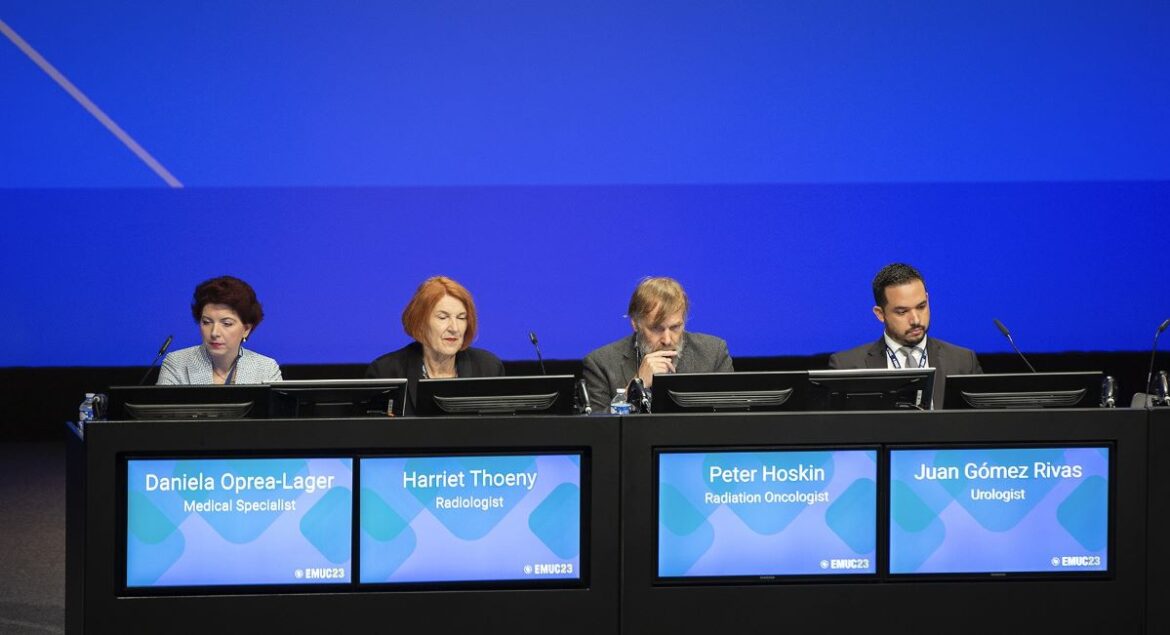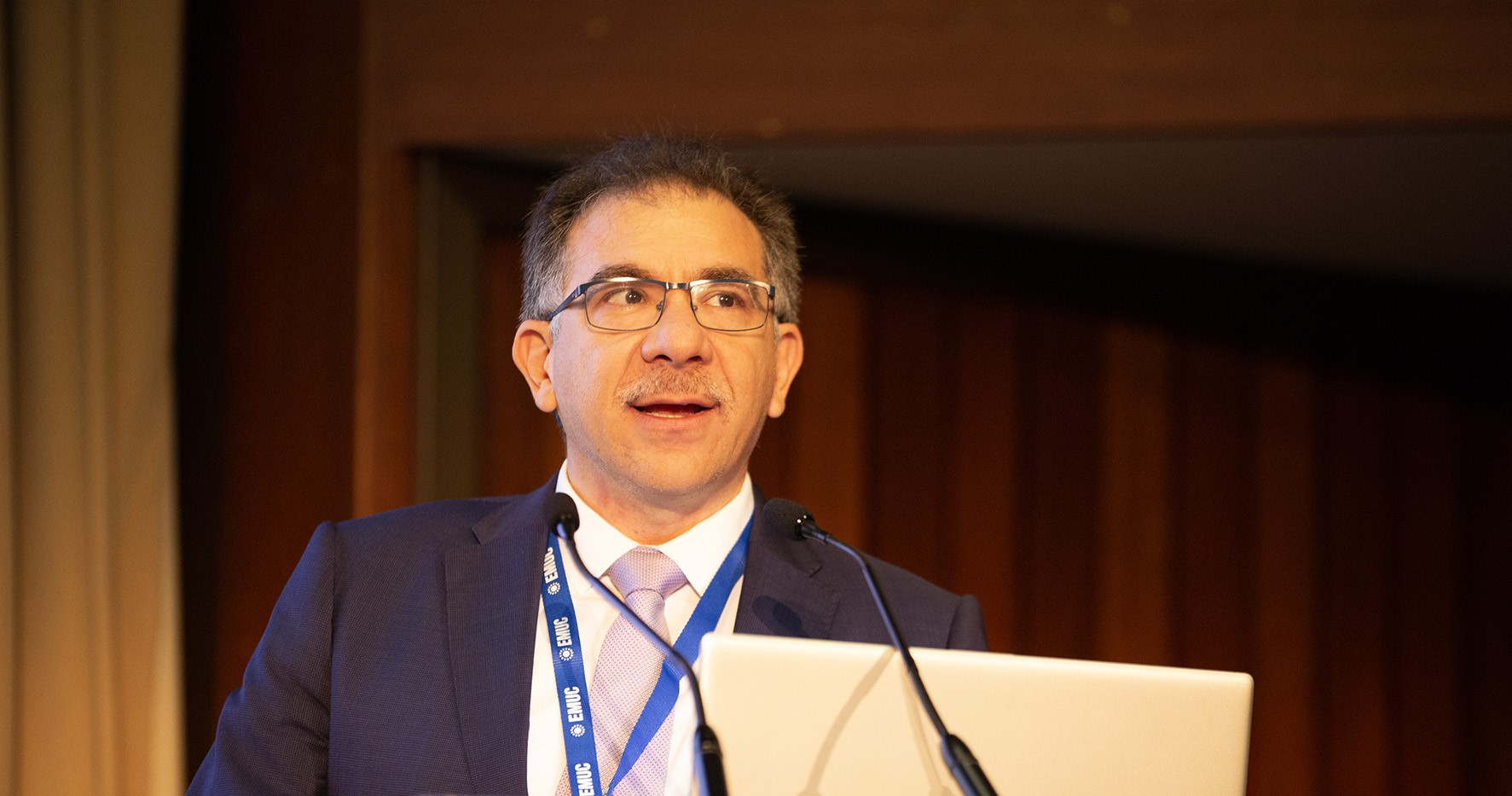Co-chaired by Assoc. Prof. Juan Gómez Rivas (ES), Prof. Peter Hoskin (GB), Assoc. Prof. Daniela Oprea-Lager (NL) and Prof. Harriet Thoeny (CH), Plenary Session 2 took a deep dive into the new horizons for high-risk prostate cancer.
In his lecture ‘Image guided LN dissection’, urologist Prof. Tobias Maurer (DE) used a case study to conclude that there is no proof that image-guided LN dissection facilitates cure for prostate cancer as of yet. “PSMA-radio-guided surgery may be considered in 1-2 atypical located suspicious LNs (lymph-nodes). Multimodal therapy is very likely in patients with PSMA PET positive LNMs (lymph-node metastases), but when you need adjuvant therapy, why not upfront?”
According to Prof. Maurer, there are five image-guided LN dissection techniques: Cognitive image-guided LN dissection, sentinel-LN dissection, intraoperative PSMA-PET specimen PET/CT (new), PSMA-radioguided surgery and PSMA-fluorescence-guided surgery (new).
The role of SABR and MRI-guided adaptive RT
In her lecture ‘MR-guided radiotherapy and SABR’, Dr. Alison Tree (GB) stated that stereotactic body radiotherapy (SBRT/SABR) is likely to be the future of high-risk prostate cancer care (PACE-B trial), and MR-linac (MRI-guided linear accelerator) will enable opportunities to test new paradigms of cure.
In her definition, SBRT is a treatment given in 1-5 sessions (rather than 20-40). A larger dose is given at each treatment (fraction), with a high dose given around the tumour, with a fast dose that ‘fall off’ around the tumour. Dr. Tree indicated that if you get the dose accurate enough, the side effects may be eradicated. Trial results have shown this for the bowel, but not in the short term for the prostate yet, although after five years there is no difference.
According to Dr. Tree, the three key advantages of MRI-guided adaptive RT are imaging resolution, intrafraction motion monitoring and correction, and changing the dose whenever the anatomy changes. “Fundamental change in how we deliver radiotherapy. We need ‘margins’ because the prostate can swell, the prostate can move, the patient could wriggle, and the cancer can change”.
Complexities of systematic treatment for high-risk PCa
Covering neoadjuvant treatment, adjuvant treatment and ongoing clinical trials, medical oncologist Dr. Sara Merler (IT) presented “How systemic treatment should be used for men with high-risk localised prostate cancer in 2023”.
According to Dr. Merler, the EBRT + long term ADT remains as the first standard option with the duration of ADT of 18 to 36 months. The addition of abiraterone/prednisone in patients who meet the STAMPEDE high-risk definition shows the landscape is rapidly evolving. She stresses that the added value of multimodality treatments, including radical prostatectomy, is not known, and multi-toxicities, as well as costs must be considered.
“When looking at the trials, the definition of high-risk differs. We need to find a consensus for the definition, a possible re-classification in N+ and/or M+ with new imaging (PET-PSMA).”
Dr. Merler concluded with a comment about bone health and osteopenia/osteoporosis prevention and the risk in elderly patients.
You can watch a webcast recording of the full presentations on the EMUC23 Resource Centre.





